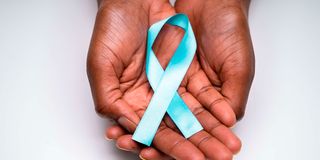Screening will help save many women’s lives

The National Cancer Institute of Kenya estimates that nine women die every day from cervical cancer.
What you need to know:
- According to WHO, cervical cancer is preventable through human papillomavirus (HPV) vaccinations, early screening and treatment.
- Kenya has cervical cancer prevention programmes, though ineffective due to limited resources to provide comprehensive services.
Cervical cancer is the leading cause of cancer deaths among Kenyan women. The latest GLOBOCAN report reveals Kenya registers over 5,800 new cases and nearly 3,600 deaths each year, making cervical cancer a significant public health challenge. The National Cancer Institute of Kenya estimates that nine women die every day from cervical cancer.
Yet, the majority of these deaths are needless. According to the World Health Organization, cervical cancer is preventable through human papillomavirus (HPV) vaccinations, early screening and treatment.
Kenya has cervical cancer prevention programmes, though ineffective due to limited resources to provide comprehensive services. As a medical laboratory scientist/cytologist who has been researching on this very matter, the government will have to do much more to effectively deal with the health threat posed by cervical cancer.
Inaccurate information
Financial and logistical constrains constitute one of the biggest hurdles. Once a woman is screened and requires a follow-up, the modalities can be financially demanding, with a pap smear costing as much as Sh2,500 and a biopsy procedure up to Sh4,000. This is without factoring in the treatment pathways, which are quite expensive as well. Besides that, most follow-up and treatment services are only available in referral hospitals, often far from home, thus requiring a patient to travel for hours. The logistics, therefore, also require additional funds.
Another major obstacle in expanding cervical cancer screening is fear: many women dread positive results and the associated social stigma. Misinformation still abounds that testing positive for cervical cancer is a death sentence. There is also lack of sufficient accurate information about why and where to get screening services, when to be screened, and who should be screened.
Furthermore, the availability of screening services remains highly inconsistent, with inordinately long waiting periods in most government health facilities. Costs in private facilities remain out of reach for majority of women.
Life-saving screening
Though free cervical screening is supposed to be available in government health centres, this is far from the reality. The majority of health centres are manned by a few nurses whose the main focus is child immunisation and outpatient clinics for TB, HIV and family planning. Nurses involved in vaccination are also conducting cervical screenings, so there is often a wait while they finish vaccinations before they attend to the screenings.
Additionally, sometimes cervical screening reagents can be out of stock for months and treatment equipment faulty. This discourages women from life-saving screening.
Each county or a sub-county hospital should establish and maintain an affordable cervical cancer follow-up testing and treatment centre. All women above 25 years should be encouraged to undergo screening in mass outreach campaigns.
Ms Nthambi is a doctoral candidate in the department of Medical Microbiology and Immunology at the University of Nairobi and a 2023 Mawazo Fellow

